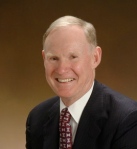It is been said that Ulysses S. Grant’s memoirs are the finest written by an American president, and this assessment may well be true, which is among the reasons why I wanted to read them. Abraham Lincoln held Grant in very high regard, and credited both Grant and General William Tecumseh Sherman with winning the Civil War militarily and thereby preserving the Union. Grant returned Lincoln’s respect and praise, both in the words that he wrote and in his decision not to become a presidential candidate in 1864—and probably become a very formidable rival, according to Lincoln’s keen political judgment.
It is a shame that Grant did not write about his own two-term presidency, and instead concluded his memoirs with the war’s end. However, he died of throat cancer in 1885, twenty years after the “rebellion” ended and less than a week after completing work on the memoirs—which were written in large part to provide much-needed financial security for his beloved wife, Julia Dent Grant. They accomplished their purpose, and were encouraged and edited by his friend, Mark Twain.
While I am not a student of the Civil War, nor of the other campaigns in which Grant served—all of which are discussed in great detail—his memoirs give the reader a window into the man and the war that wrenched and transformed this nation, and produced so much carnage on both sides. Like Dwight D. Eisenhower and other famous generals, Grant concludes: “[T]his war was a fearful lesson, and should teach us the necessity of avoiding wars in the future.”
However, Grant adds: “To maintain peace in the future it is necessary to be prepared for war. . . . [U]nless we are prepared for it we may be in danger of a combined movement being some day made to crush us out.” With respect to former slaves, Grant writes: “[H]e was brought to our shores by compulsion, and he now should be considered as having as good a right to remain here as any other class of our citizens.”
As to the future of our nation and the healing of its wounds, he concluded:
The war has made us a nation of great power and intelligence. . . . I feel we are on the eve of a new era, when there is to be great harmony between the [North and South]. I cannot stay to be a living witness to the correctness of this prophecy; but I feel it within me that it is to be so. The universally kind feeling expressed for me at a time when it was supposed that each day would prove my last, seemed to me the beginning of the answer to “Let us have peace.”
The expressions of these kindly feelings were not restricted to a section of the country, nor to a division of the people. They came from individual citizens of all nationalities; from all denominations—the Protestant, the Catholic, and the Jew; and from various societies of the land—scientific, educational, religious, or otherwise. Politics did not enter into the matter at all.
Grant dedicated his memoirs to the “American Soldier And Sailor.” And it seems true, as Geoffrey Perret has written, “he was modest, sensitive, generous, honest, and superlatively intelligent. Grant’s courage, both moral and physical, was a matter of record.” He lives on through his words and deeds, having saved a nation—albeit not being recognized fully as the American hero that he was.
© 2010, Timothy D. Naegele
[1] Timothy D. Naegele was counsel to the U.S. Senate Banking Committee, and chief of staff to Presidential Medal of Freedom and Congressional Gold Medal recipient and former U.S. Senator Edward W. Brooke (R-Mass), the first black senator since Reconstruction after the U.S. Civil War. He practices law in Washington, D.C. and Los Angeles with his firm, Timothy D. Naegele & Associates (www.naegele.com). He has an undergraduate degree in economics from UCLA, as well as two law degrees from the School of Law (Boalt Hall), University of California, Berkeley, and from Georgetown University. He is a member of the District of Columbia and California bars. He served as a Captain in the U.S. Army, assigned to the Defense Intelligence Agency at the Pentagon, where he received the Joint Service Commendation Medal. Mr. Naegele is an Independent politically; and he is listed in Who’s Who in America, Who’s Who in American Law, and Who’s Who in Finance and Business. He has written extensively over the years. See, e.g., www.naegele.com/whats_new.html#articles
[2] See http://www.amazon.com/Personal-Memoirs-Ulysses-Modern-Library/dp/0375752285/ref=cm_cr-mr-title




The Grant Memorial Bears Looking At Anew
This is the conclusion of Michael F. Bishop, former executive director of the Abraham Lincoln Bicentennial Commission, in a Wall Street Journal article that is worth reading. He writes:
See http://online.wsj.com/article/SB10001424052748703909904576051772292330568.html?mod=WSJ_hpp_MIDDLE_Video_Third#articleTabs%3Darticle; see also http://www.visitingdc.com/capitol/grant-memorial-washington-dc.htm and http://en.wikipedia.org/wiki/Ulysses_S._Grant_Memorial and http://www.dcmemorials.com/henrymerwinshrady/index.htm
LikeLike
See https://www.gingrich360.com/2021/10/25/newts-world-episode-322-bret-baier-on-ulysses-s-grant/ (“Bret Baier on Ulysses S. Grant”)
There is no doubt that Grant was one of the greatest heroes and Presidents in American history. The United States would not exist today without him.
LikeLike
“Grant” On The History Channel Is Brilliant
And its star, Justin Salinger, is brilliant in his portrayal of Grant.
See, e.g., https://en.m.wikipedia.org/wiki/Grant_(miniseries)
LikeLiked by 1 person